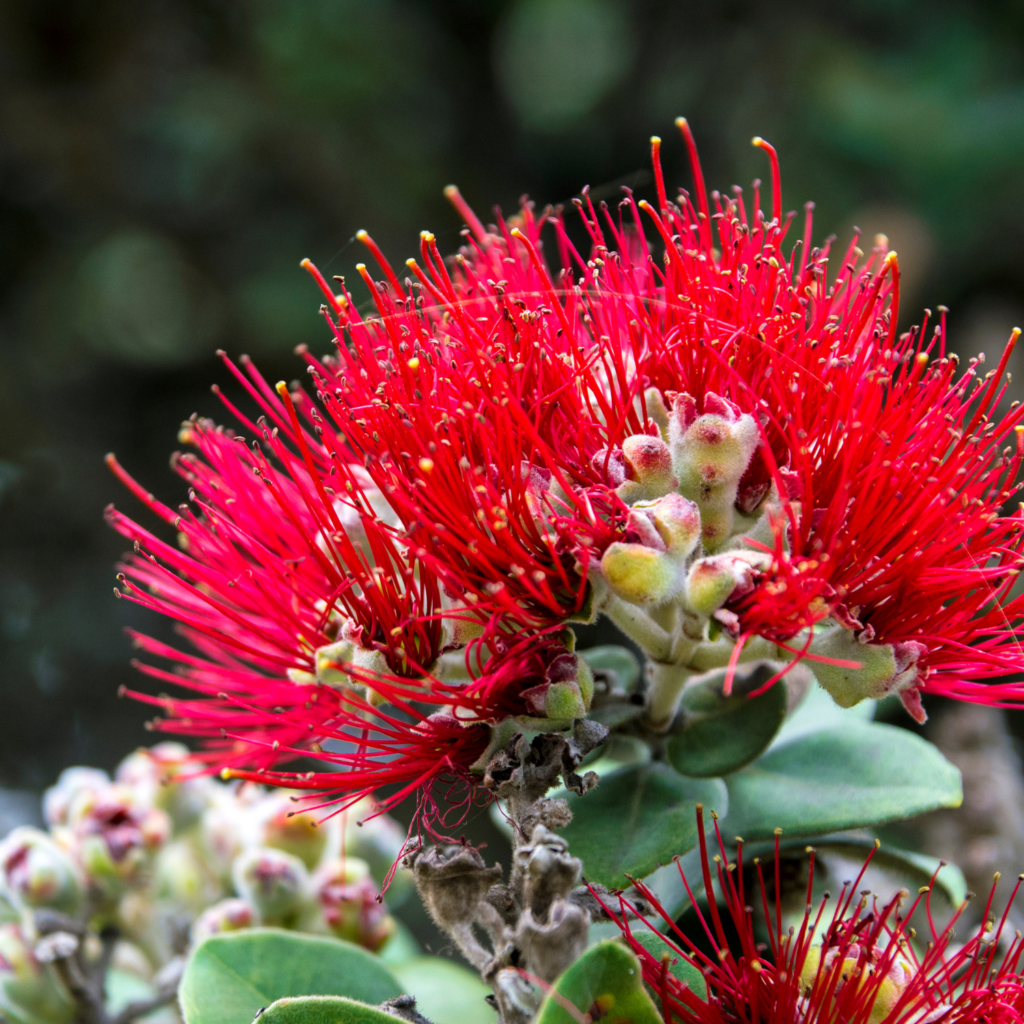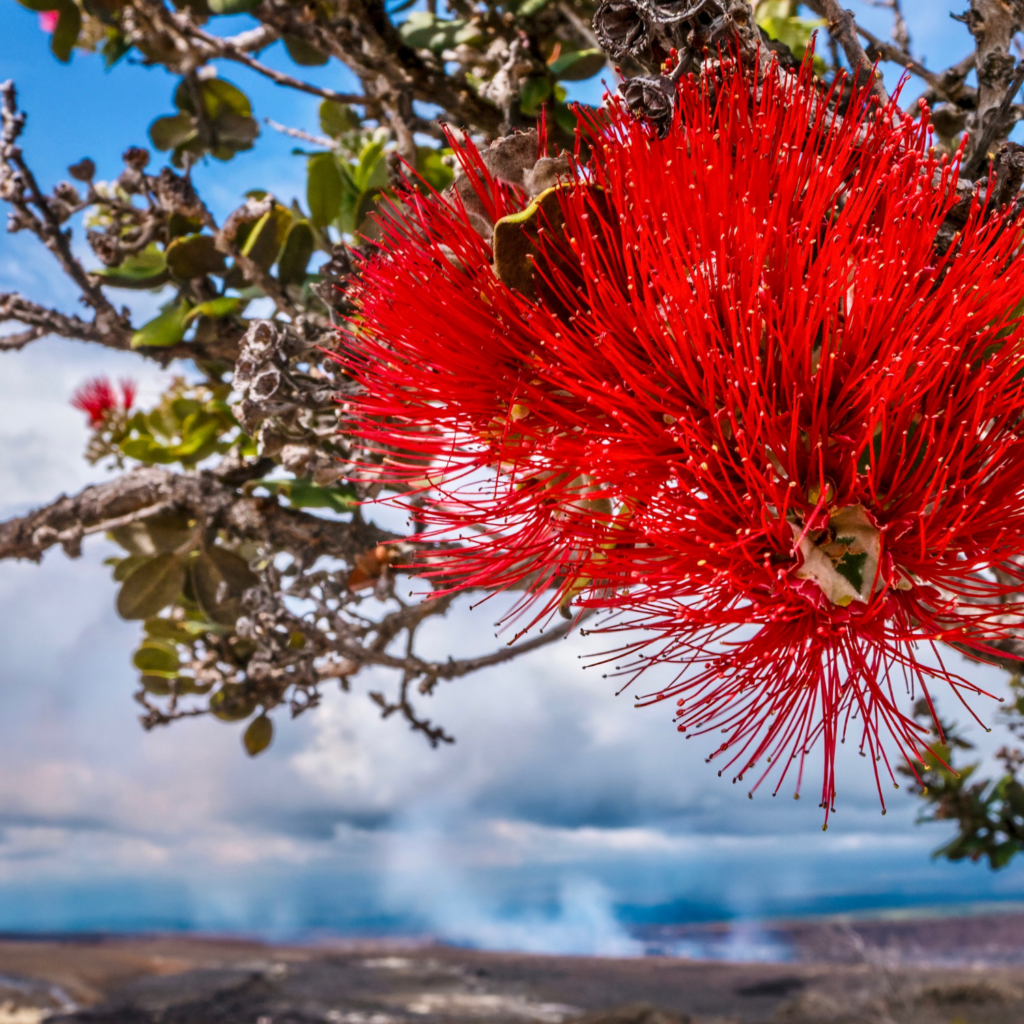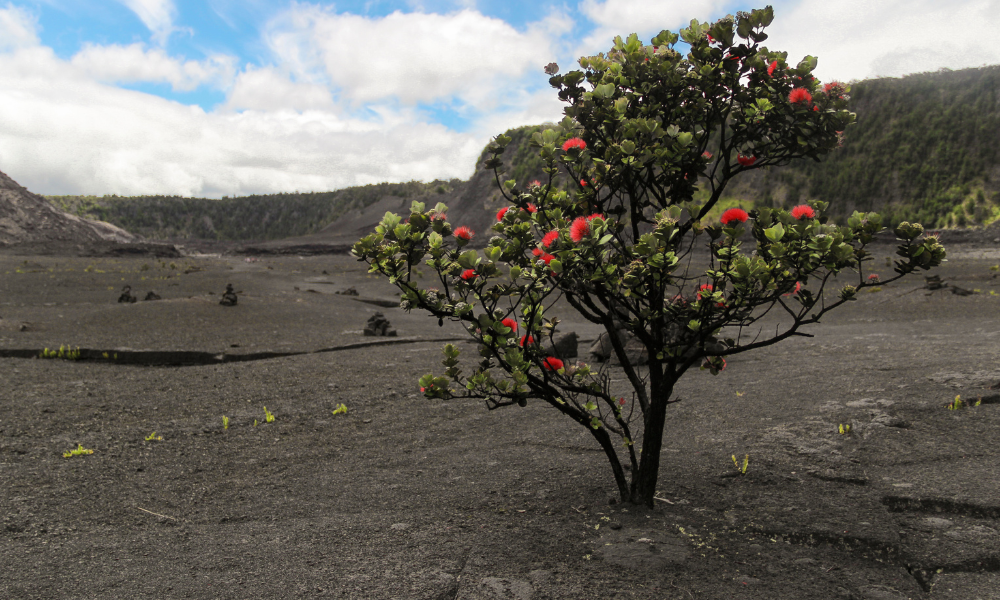ʻŌhiʻa Lehua is one of Hawaiiʻs most important trees, as its past is interwoven with so much history, and its beauty represents so much of Hawaiiʻs culture. But its future is threatened. As Rapid Ohia Death sweeps through the Island of Hawaii, the tree is becoming more treasured than ever.
Interested in learning more about the ʻōhiʻa lehua tree? Or wondering where to see one for yourself? We‘ve got you covered with everything you need to know!
What is The ʻŌhiʻa Lehua Tree?
ʻŌhiʻa lehua is the most common native tree in Hawaii. It is marked by its bright red puffy flowers, though sometimes the flowers are white or yellow instead.

Ohia Lehua grows throughout the islands, from coastal regions to high altitudes. You‘ll see it in young lava fields, as the ʻōhiʻa lehua is one of the first plants to recolonize after a lava flow, almost as if it were created to exist near volcanic fury…
The Story of Ohia & Lehua (and Pele)
Pele, the Hawaiian volcano goddess, was used to getting her way. So when she encountered a tall, handsome warrior named Ohia, Pele knew her burning desire for him was no mistake. She wanted him, forever.
Unfortunately, Pele was a tad too late. Ohia had already fallen for the beautiful maiden, Lehua, to whom he vowed his eternal love. The boyfriend and girlfriend were inseparable; not even Madame Pele could change his feelings for Lehua.
But you never say “no” to Pele without suffering some type of consequence. And for poor Ohia – as nicely as he might have rejected her – that punishment came all too quickly. Pele instantly zapped him into an ugly, twisted tree, and when Lehua saw what had become of her hunk of a boyfriend, streams of tears poured down her face. She cried so loudly that the gods had heard her. To make her feel better, they transformed Lehua into a gorgeous red flower before placing her on the ohia tree.
From that day on, the ohia tree has blossomed with beautiful red lehua flowers, and it’s said that if you pick a flower, the skies will weep because the lovers have been separated.
There may be different versions of this story, but this is the one that I was told as a kid. It’s one of my favorite Hawaiian love stories.

ʻŌhiʻa Lehua Through the Years
Ohia Lehua is more than just a tree – it is an integral part of Hawaii culture. Early Hawaiians used its wood to beat plant fiber into kapa cloth. They also used it to prepare poi and turned it into weapons.
They also used the leaves for medicinal tea. As for the flowers, they were used to make lei and adorn hula alters.
Today, lehua remains an important part of traditional practices like hula.
But its value is multifold, as the ʻōhiʻa lehua is also an essential part of Hawaiiʻs landscape. Its durability allows it to help with watershed protection and prevents erosion.
Rapid Ohia Death
The bright red lehua blossoms are a source of joy for people in Hawaii. Each May, the Merrie Monarch Festival typically brought endless lehua blossoms to Hilo. But that changed in 2014 when a mysterious fungal disease began wiping out tens of thousands of ʻōhiʻa trees.
The fungus blocks water from nourishing the tree, causing it to die in a matter of days or weeks. Right now, it is mostly limited to Ohia forests on the island of Hawaii, but its effects are still grave.
Ohia is vital to the health of native forests, so be sure to do your part by not moving or tampering with any part of an ʻōhiʻa lehua tree.
Where to see ʻŌhiʻa Lehua in Hawaii
You can see ʻōhiʻa lehua on any of Hawaiiʻs main islands, and it grows in a range of microclimates.
It’s possible to find them in low-lying coastal regions, but I’ve had better luck spotting them at higher elevations. Check out the ones at Haleakala National Park on Maui or Volcanoes National Park on Hawaii Island. Just be sure to stay on marked trails and follow all park instructions to prevent the spread of Rapid Ohia Death.
Despite its current challenges, there is hope for the native ʻōhiʻa lehua tree. Scientists and Hawaiian practitioners are working hard to protect these valuable trees.
Still, your sighting of an ʻōhiʻa lehua tree in Hawaii will feel extra valuable as you understand all it endures and represents in the islands.




